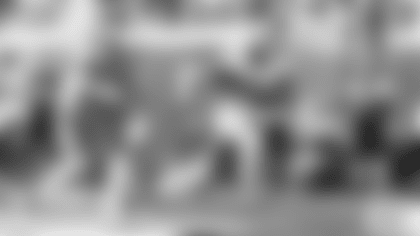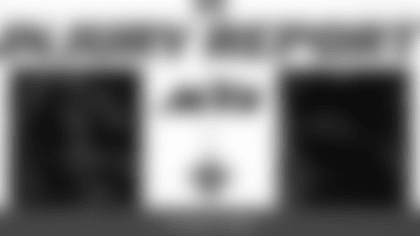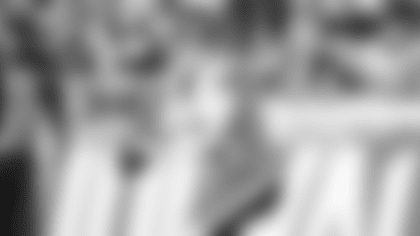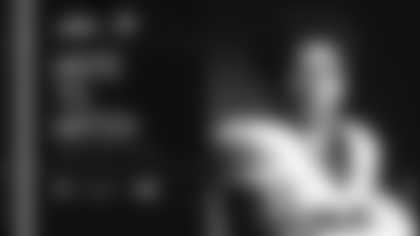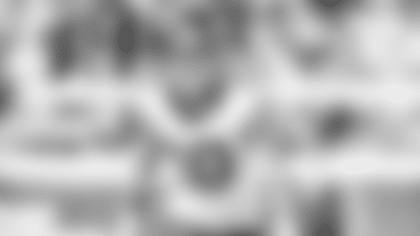Though the drills won't get under way until Saturday, NFL personnel have already been arriving at Lucas Oil Stadium in Indianapolis in droves as preparations begin for the annual NFL Combine.
Unofficially, the combine is seen as the start of the draft season. In reality, the process starts just days after the previous year's draft. But what makes this event unique is the fact that this is the one time when the majority of the draft class is in the same place at the same time.
Every year there are the same questions about which top prospects will show up in Indy and which ones won't, and the same arguments arise about whether they should. However, in recent years we have seen that all the top draft-eligible players find their way to the combine. The NFL, as only the NFL can do, has turned this into a "see and be seen" event. The round-the-clock media coverage and league-related activities surrounding the workouts create great exposure opportunities for these young players to show themselves, and most, if not all, at least show up and take part in some part of the event.
With that being said, this week's workouts, interviews and medical exams will be an important piece of the evaluation process for many players, particularly among the most visible players — the quarterbacks. Here's a quick rundown of things to consider as each group takes center stage at "The Luke."
QUARTERBACKS
At least six of the top 10 teams in the draft could have a quarterback need to fill come draft weekend. While that's good news for prospects like Cam Newton, Blaine Gabbert, Jake Lockerand Ryan Mallett, the bad news is that each has his issues that he needs to overcome, and no one has established himself as "the guy."
Scouts will want to see Newton and Gabbert work from under center, and Mallet and Locker have to answer questions about mechanics. As a result, look for some second-tier guys like Iowa's Ricky Stanzi and TCU's Andy Dalton to step into the mix.
RUNNING BACKS
The running back-by-committee philosophy that has taken over the NFL has changed the way personnel people look at the position and created more opportunities for a wide range of backs. Though Alabama's Mark Ingram fits the bill, the day of the workhorse back is past. Bigger backs, smaller backs, speed backs and guys with strong receiving skills will all get looks as teams try to fill specific needs.
Besides Ingram, look for names like Michael Leshoure of Illinois, Daniel Thomas of Kansas State — who has the build and the skills for the pro game — and smaller players like Kendall Hunter of Oklahoma State and Jacquizz Rodgers of Oregon State to get serious looks.
WIDE RECEIVERS
The emergence of the three- and four-wide-receiver sets and the extensive use of the empty backfield in the NFL have placed a premium on the receiver position. The key for this year's class will be versatility. Teams have tight restrictions when it comes to gameday rosters, so receivers who can align in the slot as well as out on the perimeter and can run all routes will be in high demand.
Georgia's A.J. Greenis the top prospect and a big-time playmaker, Alabama's Julio Jones is a big, physical receiver who is also a dangerous open-field runner, and guys like Titus Young of Boise State and Torrey Smith of Maryland are vertical threats who also contribute in the return game.
TIGHT ENDS
Wisconsin's Lance Kendricks and Kyle Rudolph of Notre Dame are considered the top pass catchers in the class. Luke Stocker of Tennessee is a more conventional TE with excellent blocking skills and good hands, but he needs to show his athleticism here in Indy.
OFFENSIVE LINEMEN
Though Colorado's Nate Solder is considered the top prospect by many, we like BC's Anthony Castonzo. He plays with great technique and possesses the size and athleticism to be a cornerstone tackle. Wisconsin's Gabe Carimi gets it done with size and strength and is an excellent power player.
Among the interior linemen, Florida's Mike Pouncey is not as good as his brother, Danny Watkins of Baylor will come off the board early, and Lehigh's William Rackley is smart, tough and instinctive — just the way the Patriots like their linemen.
DEFENSIVE LINEMEN
This is the deepest area in this year's draft — you could see a dozen D-linemen taken in the first round in April.
Clemson DE Da'Quan Bowers is a power rusher and Auburn's Nick Fairley is a dominant force inside. Either could make a case as the top pick in the draft. Alabama DT Marcell Dareus is a prototypical 3-technique in the 4-3. Ryan Kerrigan of Purdue has great pass-rush skills, and Missouri's Aldon Smith is an ideal DE-OLB in the 3-4 that Jets fans should keep an eye on. Cal's Cameron Jordan had a great Senior Bowl and could also be an ideal 3-4 DE.
LINEBACKERS
This group shows great versatility, and in a league that is moving toward multiple fronts and schemes, that's a good thing. Von Miller of Texas A&M, Bruce Carter of North Carolina, Justin Houston of Georgia and Akeem Ayers of UCLA all have the wide-ranging skillset to rush the passer and play in coverage in the 3-4. North Carolina's Quan Sturdivant is the top prospect among the interior players.
DEFENSIVE BACKS
This class of DBs is loaded with guys who can make an immediate impact. Prince Amukamara of Nebraska and LSU's Patrick Peterson are both top cover corners, while Colorado's Jimmy Smith and Aaron Williams of Texas are athletic playmakers.
UCLA safety Rahim Moore is another prospect Jets fans can watch closely. He's a centerfielder type who makes plays on the ball and has great range. He's also a good tackler. Oklahoma's Quinton Carter entered the offseason as a top prospect but struggled at the Senior Bowl. He will need to perform well this week in Indy.



